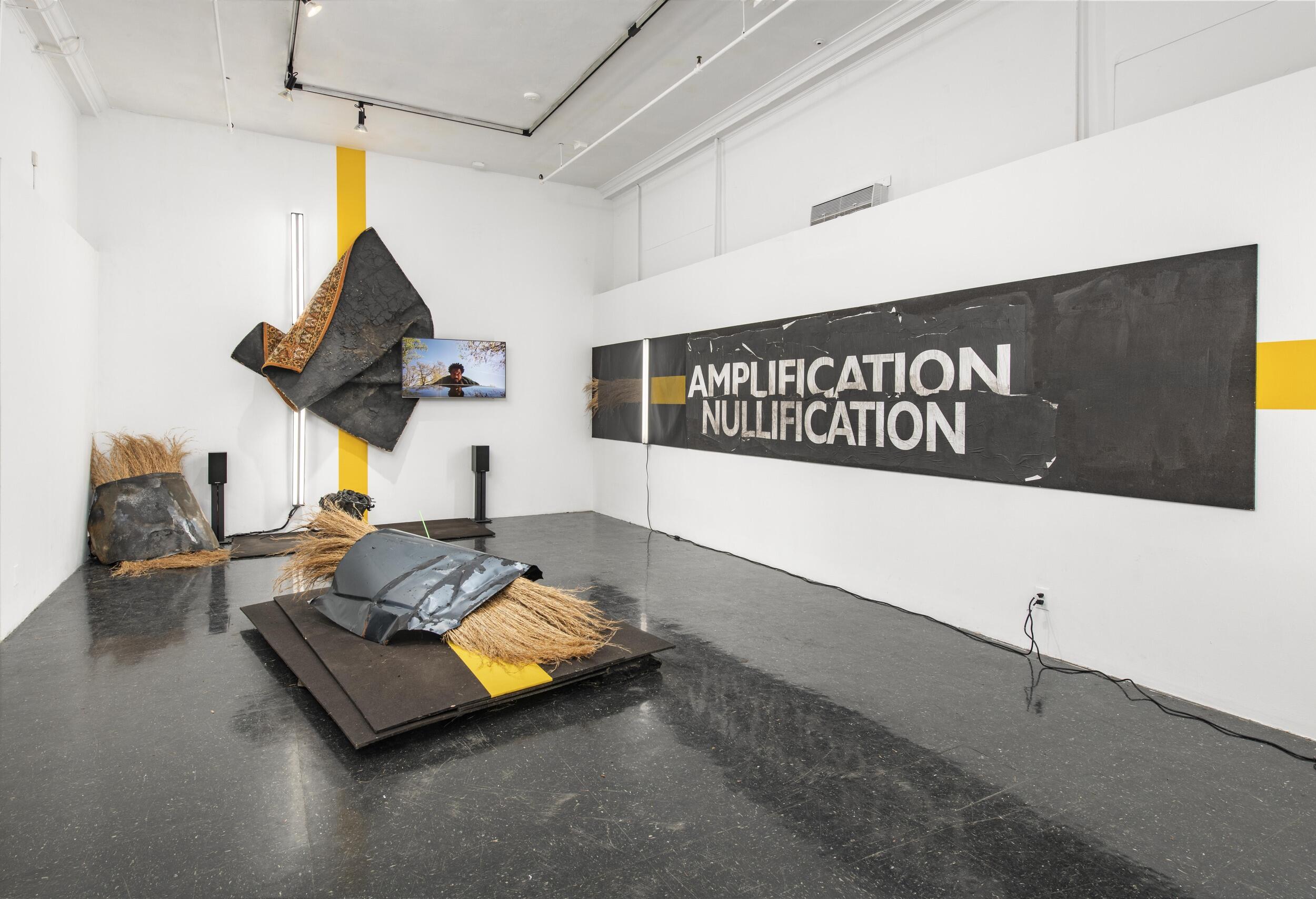
July 5, 2018
Art graduate’s fellowship-winning installation provides perspective on the black experience
Share this story
By Faisal Amin
Johannes James Barfield believes it can be hard to understand certain things unless you see them from another person’s perspective.
That idea of perspective is what Barfield, a recent graduate of the Virginia Commonwealth University School of the Arts, intended to create with his thesis project “My Eyes Due See,” a mixture of videos, music and site-specific sculptures that provides a glimpse of the black experience in America.

“I guess the surface-level part of it is thinking about success, which can mean different things to different people,” Barfield said. “We’re talking about being able to feed yourself and the basic necessities.”
Barfield’s installation has earned him a spot in elite company as a 2018 Toby Devan Lewis Fellowship recipient. The fellowship is awarded annually to one student from each of the 10 best art schools in the country and includes a $10,000 stipend, which can be used at the recipient’s discretion. The fellowship was created in 2006 by philanthropist Toby Devan Lewis to foster creativity in the arts.
“My Eyes Due See” focuses on internal and external factors that Barfield has experienced as a black man. He grew up in Winston-Salem, North Carolina, acutely aware of the realities facing African-Americans, such as prejudices, racial profiling and police brutality. Those realities, and the nuanced racial tensions that feed them, were woven throughout “My Eyes Due See” as Barfield navigated the differences between the perception of who America thought he was and his own self-image.
“‘My Eyes Due See’ is about clear peripheral vision and looking backward on American history and personal history while simultaneously looking into a potential future. The layering of past, present, and future are intermixed with an overlapping of personal history, American history, and future history,” Barfield wrote in his thesis for the project.
During the video’s second act, Barfield chose to flash the term “objective reasonableness” onscreen to coincide with Lead Belly’s “Pick a Bale of Cotton,” a blues song tied to indentured servitude. Barfield said he wanted to show the connection between past and present. The phrase “objective reasonableness” was coined by a U.S. Supreme court case, Tennessee v. Garner (1985), in which the court ruled that police use of force must be “objectively reasonable.”
The juxtaposition “creates a meeting place for the past and present to interlock and create conflated meanings of victimhood, victory, and vindication. When I say ‘present’ I mean that Tennessee v. Garner (1985) is relevant because of today's ongoing police brutality cases,” Barfield said in his thesis.
“It’s about bringing the street life into the home, splashing those together,” Barfield said of the installation, explaining that “street” can connote anything from gun violence and police brutality to hip-hop culture and nostalgia. “Intermixing ideas of street code with domestic living. It’s a very complex conversation. It has multiple layers.”
“‘My Eyes Due See’ aptly explored the relationship between policing, the judicial system and its relationship to black bodies, specifically black bodies on the road, in ways that were original and poetic yet absolutely timely,” said Amber Esseiva, assistant curator at the Institute for Contemporary Art, who selected Barfield’s work for the fellowship.
“In this exhibition, language was key,” Esseiva said. “Words such as ‘reasonableness’ and ‘nullification’ and ‘amplification’ are readily seen in Barfield’s installation and packed with nuanced tensions. Johannes’ work is contending with the extreme abuses of power that the judicial system and police force has had on black individuals in the United States.”
“Autonomy is the overarching theme throughout the work as it pertains to race, identity, urban and rural environments, and the relationship between generational trauma and nostalgia,” according to Barfield’s thesis.
The installation brings together a mixture of jarring concert-style music, video and sculptures made from old car parts and broomsedge grass, which is native to Virginia.
“I also tried to tie in nostalgia, past things that make you feel good,” Barfield said. One of the objects used in the video is a screen fence, which reminds Barfield of the screen porch on his grandmother’s house where he played as a child. “It was always very warm, it had a presence,” he said.
The music is mixed and mastered from a collection that has become a staple in the black community and culture, Barfield said. For example, he incorporated “Joy and Pain” by the band Maze because it “directly ties to me going to family cookouts. I tried to mix everything that I have experienced.”
“My Eyes Due See,” he said, is a subtle plea to Americans to recognize that all realities are not equal. The project emphasizes the need to control one’s own destiny.
“There is an urgency,” Barfield said. “It’s very difficult to communicate these things. However, it is good to know people are listening. It is a good feeling to be able to reinforce the ideas that I have.”
Subscribe to VCU News
Subscribe to VCU News at newsletter.vcu.edu and receive a selection of stories, videos, photos, news clips and event listings in your inbox.








